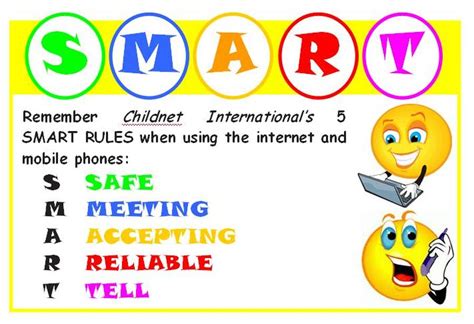
The “3-Hour Rule,” a strategic time-blocking technique, is gaining traction as a solution for minimizing pre-dinner party stress and maximizing enjoyment for both hosts and guests. By dedicating focused three-hour blocks to specific tasks in the days leading up to the event, hosts can avoid last-minute chaos and ensure a seamless and enjoyable gathering.
Dinner Party SOS? The ‘3-Hour Rule’ Might Just Save Your Night!
For anyone who has ever hosted a dinner party, the experience can be a double-edged sword. The anticipation of gathering friends and family for an evening of good food and conversation is often accompanied by a significant amount of stress. From menu planning and grocery shopping to cleaning, decorating, and the inevitable last-minute snafus, the hours leading up to a dinner party can feel like a race against time. However, a simple time-management technique known as the “3-Hour Rule” is emerging as a powerful tool for minimizing pre-party panic and ensuring a relaxed and enjoyable experience for both the host and their guests.
The 3-Hour Rule, as explained by organizational experts, involves dedicating focused three-hour blocks to specific tasks in the days or weeks leading up to the dinner party. This proactive approach breaks down the overwhelming task list into manageable chunks, preventing the dreaded last-minute scramble that often leaves hosts feeling frazzled and unable to fully enjoy their own event. The strategy promotes organization, reduces procrastination, and fosters a sense of control, allowing hosts to approach their dinner parties with confidence and ease.
“The 3-Hour Rule is all about chunking your time,” explains professional organizer, Sarah Jones. “Instead of feeling overwhelmed by the entire dinner party preparation process, you allocate specific three-hour blocks to focus on one or two key tasks. This focused approach makes the tasks feel less daunting and allows you to make significant progress without feeling rushed.”
Implementing the 3-Hour Rule: A Step-by-Step Guide
To effectively implement the 3-Hour Rule, hosts should follow a structured approach:
-
Comprehensive Task List: The first step is to create a detailed list of every task required for the dinner party, from initial planning to final cleanup. This list should include everything from menu selection and guest list creation to grocery shopping, cleaning, decorating, setting the table, preparing food, and post-party cleanup.
-
Prioritization and Time Estimation: Once the task list is complete, prioritize each task based on its importance and urgency. Estimate the amount of time required to complete each task. This step is crucial for allocating the three-hour blocks effectively. Some tasks, like deep cleaning the house, might require multiple three-hour blocks, while others, like setting the table, might only require a portion of one block.
-
Scheduling the 3-Hour Blocks: With the task list prioritized and time estimations in place, schedule the three-hour blocks into your calendar. Be realistic about your availability and commitments. It’s better to overestimate the time required than to underestimate and feel rushed. Consider scheduling the blocks on days when you have fewer other obligations. For example, you might schedule a three-hour block for grocery shopping on a Saturday morning and another block for food preparation on a Sunday afternoon.
-
Focused Execution: During each three-hour block, focus solely on the assigned tasks. Minimize distractions by turning off notifications, silencing your phone, and informing family members or roommates that you need uninterrupted time. Create a dedicated workspace where you can concentrate without interruptions. For example, if your three-hour block is dedicated to cleaning the kitchen, clear the countertops, gather your cleaning supplies, and focus solely on cleaning the kitchen for the entire three-hour period.
-
Flexibility and Adjustment: While the 3-Hour Rule provides a structured framework, it’s important to remain flexible and adjust the schedule as needed. Unexpected events or delays may occur, requiring you to re-prioritize tasks or reschedule blocks. Don’t be afraid to adapt the plan to accommodate unforeseen circumstances. The goal is to reduce stress, not to create more.
Benefits of the 3-Hour Rule for Dinner Parties
The 3-Hour Rule offers numerous benefits for hosts looking to streamline their dinner party preparations:
-
Reduced Stress: By breaking down the overwhelming task list into manageable chunks, the 3-Hour Rule significantly reduces stress and anxiety. Hosts feel more in control of the process and less likely to succumb to last-minute panic.
-
Improved Organization: The structured approach of the 3-Hour Rule promotes organization and efficiency. Hosts are less likely to forget important tasks or run out of time.
-
Enhanced Time Management: The rule encourages hosts to be more mindful of their time and to allocate it effectively. This can lead to improved time management skills in other areas of life as well.
-
Increased Enjoyment: By minimizing stress and promoting organization, the 3-Hour Rule allows hosts to relax and enjoy their own dinner parties. They can spend more time interacting with their guests and less time worrying about the details.
-
Preventing Procrastination: The structured schedule helps to prevent procrastination. Knowing that a three-hour block is scheduled for a specific task encourages hosts to tackle it promptly rather than putting it off until the last minute.
-
Better Results: Focused effort during the three-hour blocks often leads to better results. Hosts are more likely to pay attention to detail and to produce a higher quality outcome.
Examples of 3-Hour Blocks for Dinner Party Preparation
Here are some examples of how the 3-Hour Rule can be applied to specific dinner party preparation tasks:
-
Menu Planning and Grocery Shopping: Dedicate a three-hour block to researching recipes, creating a menu, and making a detailed grocery list. Then, use another three-hour block to shop for all the necessary ingredients.
-
Cleaning and Decorating: Allocate a three-hour block to deep cleaning the house, focusing on the areas where guests will be spending most of their time. Then, use another block to decorate the space and create a festive atmosphere.
-
Food Preparation: Schedule multiple three-hour blocks for food preparation, breaking down the tasks into manageable segments. For example, you might dedicate one block to chopping vegetables, another to marinating meat, and another to baking desserts.
-
Setting the Table and Preparing Drinks: Use a three-hour block to set the table, arrange the seating, and prepare any drinks or appetizers.
-
Post-Party Cleanup: Schedule a three-hour block for post-party cleanup, including washing dishes, putting away leftovers, and tidying up the space.
Addressing Common Concerns and Challenges
While the 3-Hour Rule is a powerful tool, some hosts may encounter challenges when implementing it:
-
Lack of Time: Some hosts may feel that they don’t have enough time to dedicate three-hour blocks to dinner party preparation. In these cases, it may be necessary to break down the tasks into even smaller segments or to enlist the help of family members or friends.
-
Distractions: It can be difficult to focus for three hours without distractions. To minimize distractions, create a dedicated workspace, turn off notifications, and inform others that you need uninterrupted time.
-
Procrastination: Even with a structured schedule, some hosts may still struggle with procrastination. To overcome this challenge, try setting smaller, more achievable goals within each three-hour block. Reward yourself for completing each goal to stay motivated.
-
Unexpected Events: Unexpected events can disrupt the schedule and make it difficult to stick to the 3-Hour Rule. In these cases, it’s important to remain flexible and adjust the schedule as needed. Don’t be afraid to re-prioritize tasks or reschedule blocks.
Beyond Dinner Parties: Applying the 3-Hour Rule to Other Areas of Life
The 3-Hour Rule is not limited to dinner party preparation. It can be applied to a wide range of tasks and projects in other areas of life, such as:
-
Work Projects: Use the 3-Hour Rule to break down large work projects into manageable segments. This can help to reduce overwhelm and increase productivity.
-
Home Improvement Projects: Apply the 3-Hour Rule to home improvement projects, such as painting a room or renovating a bathroom. This can help to keep the project on track and prevent it from dragging on for months.
-
Personal Goals: Use the 3-Hour Rule to work towards personal goals, such as learning a new language or writing a book. Dedicate regular three-hour blocks to practicing or writing.
-
Cleaning and Organizing: Apply the 3-Hour Rule to cleaning and organizing your home. This can help to keep your space tidy and prevent clutter from accumulating.
-
Fitness and Wellness: Use the 3-Hour Rule to dedicate time to fitness and wellness activities, such as going to the gym, taking a yoga class, or meditating.
Expert Opinions on the 3-Hour Rule
Organizational experts and productivity coaches widely endorse the 3-Hour Rule as an effective time-management technique.
“The 3-Hour Rule is a fantastic way to break down overwhelming tasks into manageable chunks,” says time-management consultant, David Brown. “It allows you to focus your energy and attention on one specific task, which leads to better results and reduced stress.”
“I often recommend the 3-Hour Rule to my clients who are struggling with procrastination,” says productivity coach, Emily Carter. “The structured schedule helps them to overcome their tendency to put things off and to make consistent progress towards their goals.”
Conclusion: Embrace the 3-Hour Rule for Stress-Free Dinner Parties
The 3-Hour Rule is a simple yet powerful time-management technique that can transform the way you approach dinner party preparation. By dedicating focused three-hour blocks to specific tasks, you can reduce stress, improve organization, enhance time management, and ultimately, enjoy your own dinner parties more. So, the next time you’re planning a dinner party, give the 3-Hour Rule a try. You might be surprised at how much easier and more enjoyable the process can be. The key is to plan, schedule, and execute each block with focused attention, and to remain flexible and adjust the schedule as needed. With a little practice, you can master the 3-Hour Rule and create memorable dinner parties without the stress. Remember, the goal is to enjoy the process and to create a welcoming and enjoyable experience for your guests.
Frequently Asked Questions (FAQs)
Q1: What if a task takes longer than the allocated 3 hours?
A: The flexibility of the 3-Hour Rule allows for adjustments. If a task exceeds the initial three-hour block, you have a few options: First, assess if the task can be broken down further and completed in a subsequent three-hour block. Second, consider re-prioritizing other tasks to accommodate the extended time. Third, if feasible, delegate part of the task to someone else. The goal is not to rigidly adhere to the timeframe but to maintain focused progress and avoid last-minute rushes. “Remember, the three-hour block is a guideline, not a rigid constraint. It’s about dedicating focused time, and sometimes things take longer than expected,” advises Sarah Jones.
Q2: Can the 3-Hour Rule be used for smaller, less elaborate dinner parties?
A: Absolutely. While the 3-Hour Rule is particularly beneficial for larger, more complex dinner parties, it can also be adapted for smaller gatherings. The principle of breaking down tasks and allocating focused time remains relevant, even if the total preparation time is shorter. For a smaller dinner party, you might allocate fewer three-hour blocks or adjust the scope of the tasks within each block. The key is to proactively plan and manage your time, regardless of the scale of the event. Even for a simple gathering, a dedicated three-hour block for grocery shopping and basic prep can significantly reduce stress on the day of the party.
Q3: What if I find it difficult to stay focused for a full 3 hours?
A: Maintaining focus for three consecutive hours can be challenging. To combat this, implement strategies to minimize distractions and maximize concentration. Break the three-hour block into smaller segments with short breaks in between. For example, work for 50 minutes, then take a 10-minute break to stretch, grab a snack, or do something relaxing. Use noise-canceling headphones or listen to calming music to block out external distractions. Also, ensure that your workspace is organized and free from clutter. If focus remains a struggle, consider adjusting the length of the blocks to better suit your attention span. Shorter, more frequent blocks might be more effective for some individuals.
Q4: How far in advance should I start using the 3-Hour Rule before the dinner party?
A: The ideal lead time depends on the complexity of the dinner party and your personal schedule. For larger, more elaborate events, starting one to two weeks in advance is recommended. This allows ample time to complete all the necessary tasks without feeling rushed. For smaller, simpler gatherings, starting a few days in advance may be sufficient. The key is to assess the scope of the preparation required and to schedule the three-hour blocks accordingly. Consider creating a timeline that outlines all the major milestones and deadlines. This will help you stay on track and avoid last-minute surprises.
Q5: What if unexpected events disrupt my planned 3-Hour blocks?
A: Life is unpredictable, and unexpected events can inevitably disrupt even the most meticulously planned schedule. When disruptions occur, it’s crucial to remain flexible and adapt your plan accordingly. First, assess the impact of the disruption and determine which tasks need to be re-prioritized. Second, reschedule the affected three-hour blocks to a later time. Third, if necessary, delegate some of the tasks to others or simplify certain aspects of the dinner party. The goal is to minimize the impact of the disruption and to maintain progress towards your ultimate goal. Don’t be afraid to adjust your expectations and to focus on what you can control. The most important thing is to remain calm and to approach the situation with a positive attitude.









